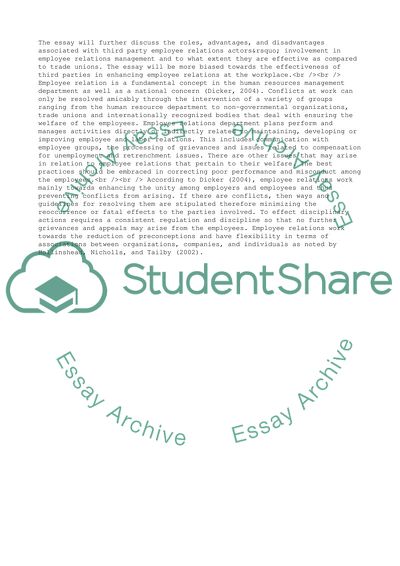Cite this document
(Employee Relations Outline Recent Development Case Study, n.d.)
Employee Relations Outline Recent Development Case Study. Retrieved from https://studentshare.org/management/1741085-employee-relations-outline-recent-developments-in-the-role-played-by-two-third-party-or-non-traditional-employee-relations-actors-eg-citizens-advice-bureaux-acas-or-the-commission-for-equality-and-human-rights-and-discuss-whether-they-are-as-eff
Employee Relations Outline Recent Development Case Study. Retrieved from https://studentshare.org/management/1741085-employee-relations-outline-recent-developments-in-the-role-played-by-two-third-party-or-non-traditional-employee-relations-actors-eg-citizens-advice-bureaux-acas-or-the-commission-for-equality-and-human-rights-and-discuss-whether-they-are-as-eff
(Employee Relations Outline Recent Development Case Study)
Employee Relations Outline Recent Development Case Study. https://studentshare.org/management/1741085-employee-relations-outline-recent-developments-in-the-role-played-by-two-third-party-or-non-traditional-employee-relations-actors-eg-citizens-advice-bureaux-acas-or-the-commission-for-equality-and-human-rights-and-discuss-whether-they-are-as-eff.
Employee Relations Outline Recent Development Case Study. https://studentshare.org/management/1741085-employee-relations-outline-recent-developments-in-the-role-played-by-two-third-party-or-non-traditional-employee-relations-actors-eg-citizens-advice-bureaux-acas-or-the-commission-for-equality-and-human-rights-and-discuss-whether-they-are-as-eff.
“Employee Relations Outline Recent Development Case Study”. https://studentshare.org/management/1741085-employee-relations-outline-recent-developments-in-the-role-played-by-two-third-party-or-non-traditional-employee-relations-actors-eg-citizens-advice-bureaux-acas-or-the-commission-for-equality-and-human-rights-and-discuss-whether-they-are-as-eff.


